Dental anxiety among patient is an incredibly difficult problem that many people suffer with. Not only can it affect a patient’s likelihood to visit the dentist for important treatment, but it also hinders the potential improvements that a dentist can bring to someone’s life.
The patient at the centre of this case study heads a large, corporate sales team, so the way he looked and felt was key to his success. After years of neglect, his teeth were discoloured, crooked, and his older veneers had become worn and unnatural-looking. When Dr Bagasi first met with this patient, he spent a lot of time discussing his difficulties – as the patient previously had an unpleasant experience with his dentist as a child, leaving him with anxiety towards dentists.
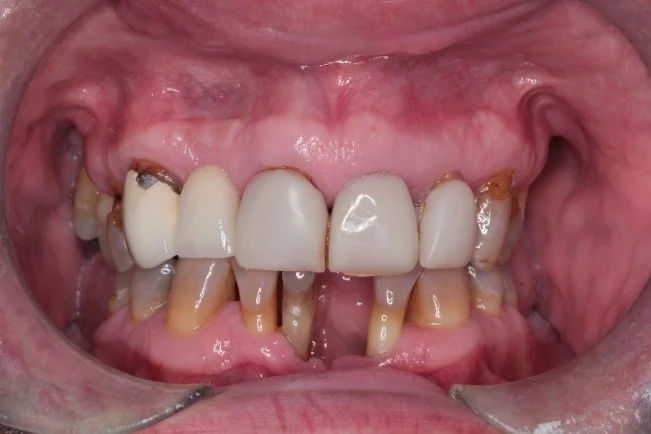
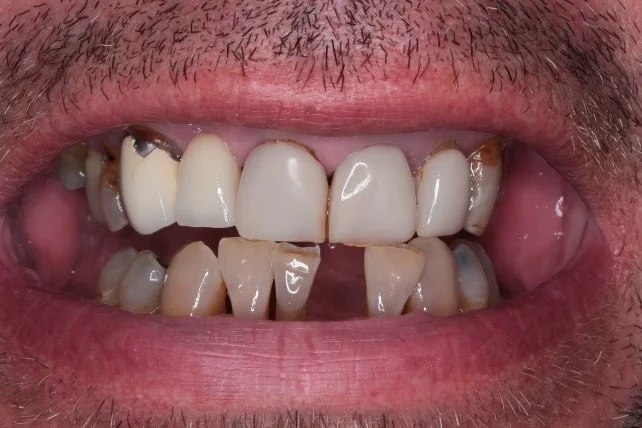
After Dr Bagasi restored some faith in this man, they began to discuss next steps and possible treatments, all while thinking about the best options for this patient’s circumstances.
Three main treatments were proposed to the patient. One was to have the remaining lower front teeth extracted and replaced with secure implants and bridgework. The patient also needed his old veneers replacing and his back teeth whitening to make sure his smile felt brand new from every angle.
Assessment Stage
Having a CT scan taken of the patient allows surgeons and the dentist to have a clearer picture of the patient’s current oral health, which is why they are often preferred. The CT scanner also allows the surgeons a unique insight into the surgery. This ‘keyhole’ like approach enables the surgeons to plan the patient’s surgery with the least amount of potential risks and complications.
A full report was written up to conclude on the diagnosis and proposed treatment options, costs, timescales, risks/benefits. After all of this was confirmed and given the all-clear, the implant placement appointment was booked. In the meantime, measurements are usually taken of the patient to construct either a temporary bridge or dentures, which can then be used after the implants have been placed. This assures each patient will be able to walk away with new teeth after their surgical appointment.
Implant Placement Stage
The implant treatment was very simple, consisting of fitting two Straumann implants in the lower front jaw. This generally doesn’t take long – roughly 30-45 minutes per implant depending on the complexity of the procedure. The appointment was fully discussed with the patient, making him better about the treatment. It was necessary for Dr Bagasi to take the patient’s anxiety into consideration.
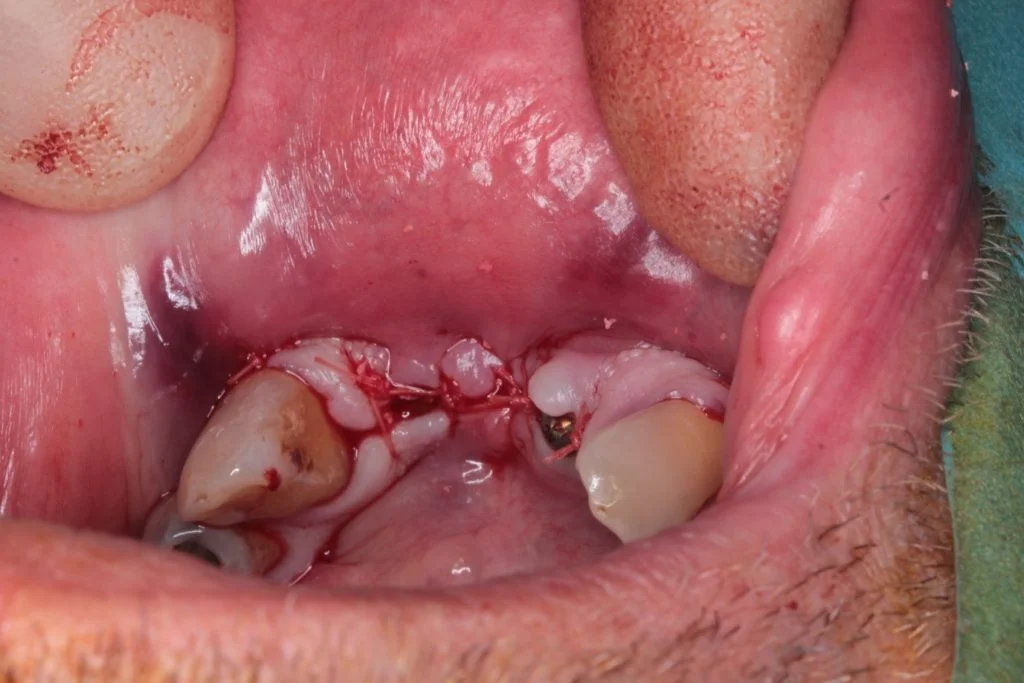
Healing Stage
Before any further progress could be made on the implant-retained lower bridge, a 3-month healing period was needed. The bone first needed to bond with the implants, as unnecessary strain on the implants could cause complications.
Crown Stage
While the healing process was ongoing, Dr Bagasi planned this patient’s treatment. This meant that an appointment was booked to have his old veneers removed and new crowns replaced. The old tooth surface we refined and polished to make sure the new crowns fit as precisely as possible.
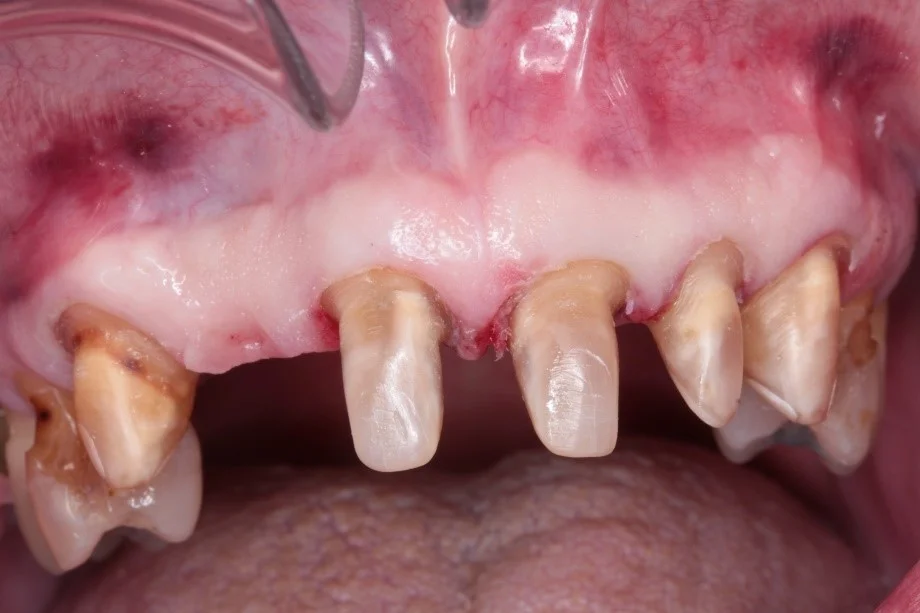
Once impressions are taken, temporary bridgework is then placed, which resembles the final tooth shape and position.
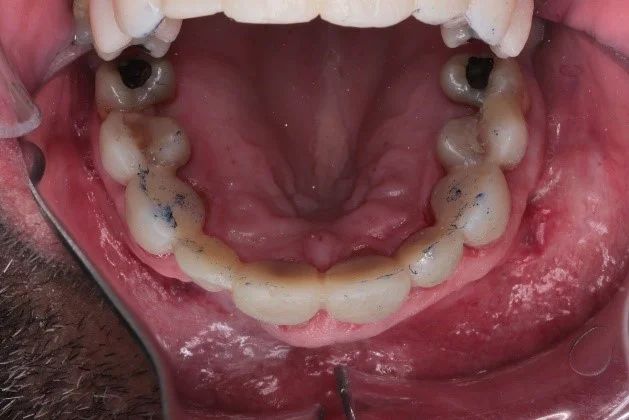
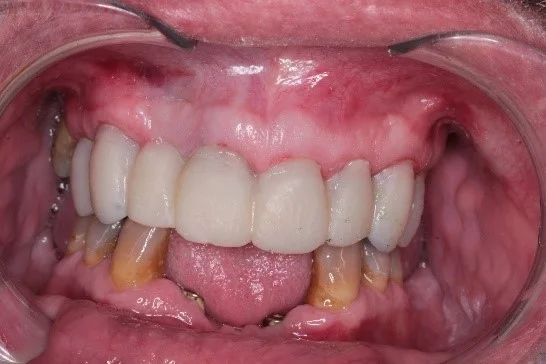
Further to this, a VIP appointment was then booked with our technicians that construct the crowns. This ensures that the shade and size of the teeth were recorded and discussed with the patient every step of the way.
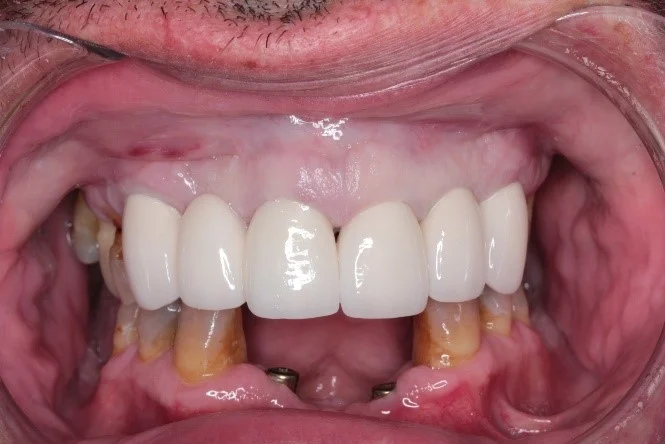
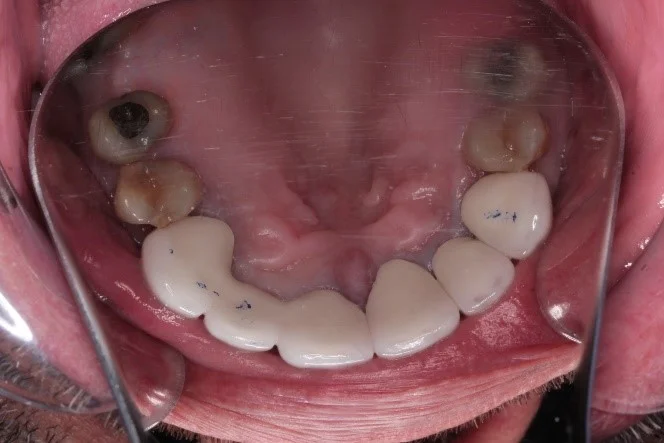
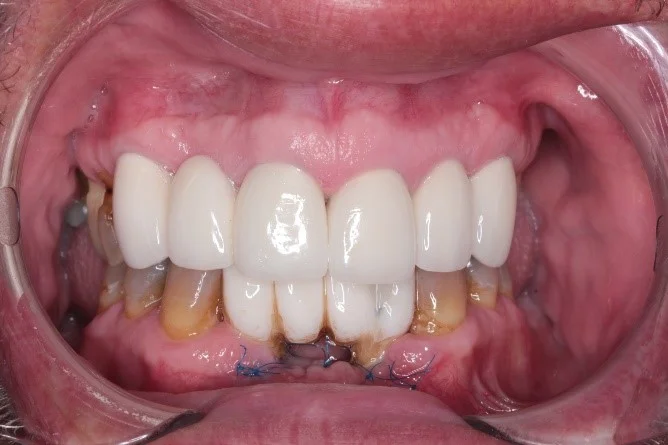
The final crowns were then fitted within a week.
It is very important to plan the crowns and bridgework from the start and plan it accurately such that we can ensure the bite is created and the patient can enjoy their meals properly.
Impression Stage
The last stage, before the final fit, means having posts placed into the implants. This measures where the implants are exactly in the patient’s mouth, which will play a role in how the bridgework is fitted.
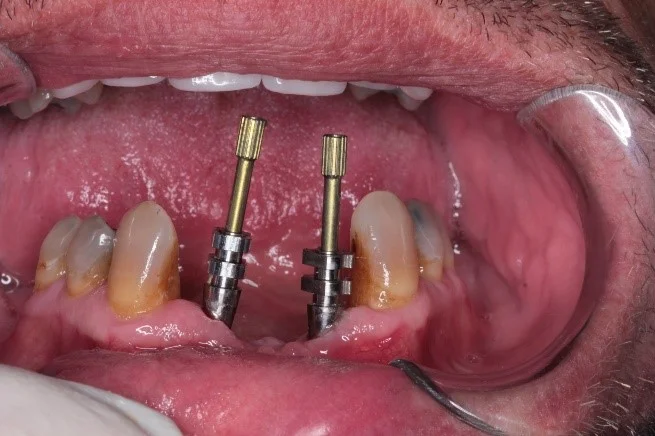
Further to this, a customised impression tray is used. These steps are important before the crowns are permanently fitted to the bridgework.
Final Fit
The final fit left this patient with a new set of gold-quality veneers, an implant-retained lower bridge, and newly-whitened back molars. This had a fantastic effect on the patient’s social and professional life, but it also has a huge impact on changing his anxiety towards dentists.
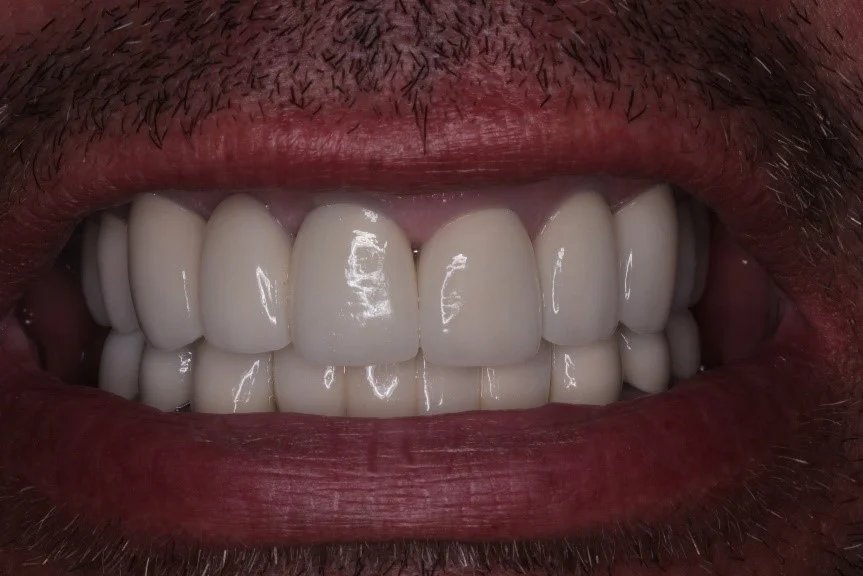
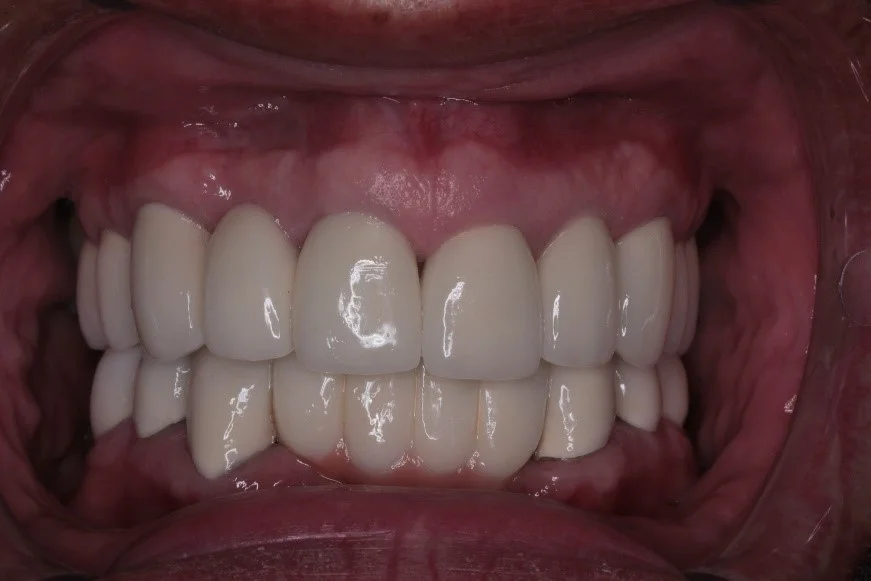
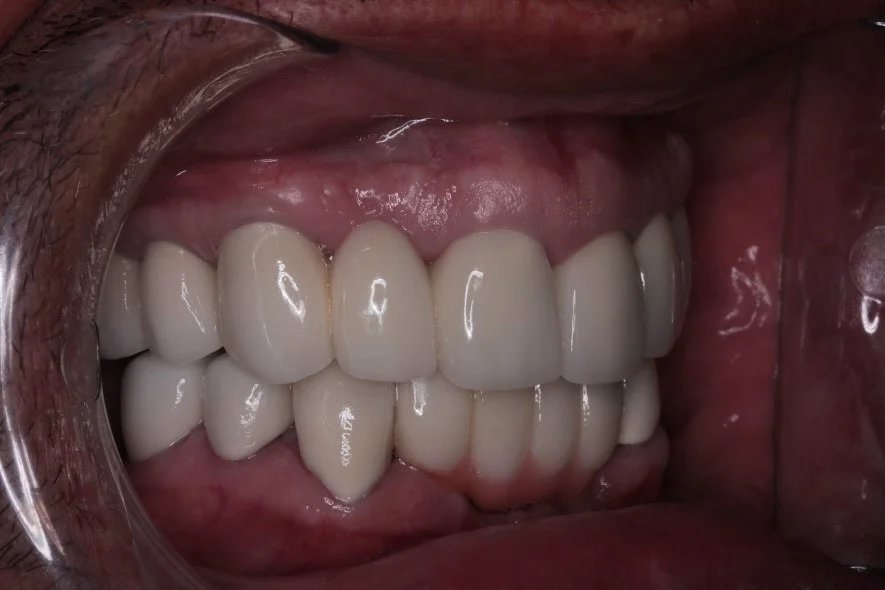
Although the whole process consisted of three main treatment types, it was designed to work well together to deliver the best smile for Dr Bagasi’s patient.
Unsure about your dental health? Call your nearest Synergy Dental Clinic and we’ll be happy to help.

